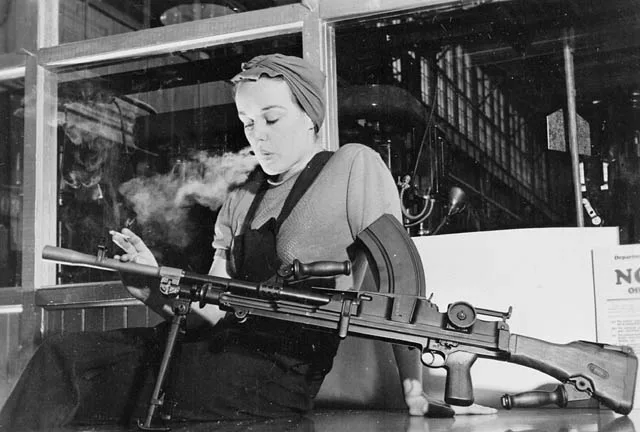From housewives to media icons: The history of women in marketing throughout 20th century North America
Marketing and advertising are used to influence and, in some cases, manipulate a broad audience. They also reflect the mindset of society during particular decades and often fluctuate based on societal shifts.
As a result, advertising simultaneously communicates, creates and reinforces societal expectations. This is especially true for advertising directed toward women in the 20th century. Despite their milestones in the century, many advertisements attempted to force them into particular roles. However, as women gained more rights, some advertisements reflected these changes and achievements.
Read ahead to learn how marketing toward women has evolved throughout the 20th century.
World War I (1914-1918)
During the First World War from 1914 to 1918, most propaganda by the Committee on Public Information’s Division of Pictorial Publicity depicted gender as binary and portrayed traditionally masculine and feminine traits that were popular at the time.
To make women encourage their male partners to enlist, posters presented women as victims and under attack by the enemy. This established men as protectors, while women were portrayed as needing protection.
On the other hand, other posters, especially from the Red Cross during World War I, empowered women by including visuals of them wearing nursing gear, attending to wounded soldiers on the battlefield and carrying soldiers on stretchers.
Although the posters advertised women differently, they had the same goal: to influence women to take on a patriotic duty, either by allowing their husbands to serve in the war or by supporting the war effort as a nurse.
The Great Depression (1930s)
The lack of women in the marketing industry became apparent during the Great Depression. Advertisements depicted the female consumer as the white, middle-class housewife who was continuously impressionable and irrational regarding her purchasing habits.
Meanwhile, men were portrayed as hard-working, rational consumers in comparison, thus making the ratio of eight male advertising agents for every female agent in the 1930s visible. The few women advertising agents were exclusively hired for beauty and household departments, further demonstrating the limitations placed on women during this time.
World War II (1939-1945)
The method of empowering women through advertising used during the First World War was repeated on a larger scale during the Second World War. Women had to work in previously male-dominated positions because men were expected to join the armed forces. Women worked in munitions factories and the textile, service and agriculture industries.
This led to the emergence of female media icons such as Canada’s “Ronnie the Bren Gun Girl.”
“Ronnie the Bren Gun Girl” became a female media icon when Veronica Foster was photographed in 1941 by the National Film Board (NFB) while working at the John Inglis Company in Toronto. The classic photograph that gave Foster the name depicted her wearing overalls and smoking a cigarette as she admired the Bren Gun she just assembled.
Although this photograph successfully attracted women to factory work, the reason why the NFB selected this photo of Foster to represent Ronnie the Bren Gun Girl is telling. They wanted to prove that a female factory worker could still be attractive and desirable.
Ronnie the Bren Gun Girl was so successful that it motivated the creation of the U.S.’s familiar media icon Rosie the Riveter in 1942.
1950s
After the Second World War, advertising dramatically shifted as men settled back into the working sector. Depictions of women doing domestic work and taking the role of the housewife skyrocketed in marketing campaigns.
Examples include a Joseph Schlitz Brewing Company’s 1950s ad stating, “Don’t worry darling, you didn’t burn the beer!” and a Hoover advertisement insisting that all women need a Hoover vacuum for Christmas.
1960s
Marketing an obsession with cleanliness towards women continued into the early to mid-1960s. For instance, some advertisements depicted the evolution of women cleaning throughout different stages of their lives to influence women into purchasing cleaning products by placing the burden of housework on them.
Common themes in such advertisements included using vibrant colours and depicting women enthusiastically cleaning and pleased with the state of their homes.



Height of the Women’s Liberation Movement (1970s)
Despite the women’s liberation movement in North America during the 1960s and 70s, women were still depicted as performing duties within the home with seductive undertones rather than showing them outside and working.
However, women persevered and expressed their disdain for such sexist representations. For instance, they demanded that advertisements show women in working roles since they represented nearly half of the workforce in the 70s. Women also wanted marketing campaigns to include men feeding babies to normalize men pursuing caretaking responsibilities.
Marketing campaigns slowly started to respond to the women’s liberation movement and women’s demands for inclusive advertisements. This included advertising women with skinny cigarettes, less restrictive bras and lighter makeup to respond to shifting beauty standards.
Marketing in Canada and the U.S. has represented and influenced women in ways aligned with the societal expectations of gender in a given decade.
Only when society depended on women in the workforce were they depicted as capable, rational and strong. However, when society wanted women to do most of the domestic work to make room for men in the working sector, advertising firms romanticized cleanliness and the housewife role.
By evaluating the history of how women were targeted in the marketing industry, it is clear that North America should discontinue sexist traditions in and outside the marketing world. After all, women like Veronica Foster were so much more than pretty faces –– they were heroes and should be presented as such.


(Richard Pollay Collection Tobacco Industry Promotion Collection, Box 10)

Grace Nelson-Gunness
Grace Nelson-Gunness is a reporter for Business Hub. She enjoys watching Criminal Minds or reading a suspenseful horror-thriller novel while drinking a vanilla latte.

